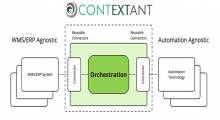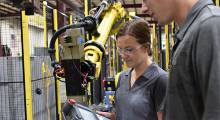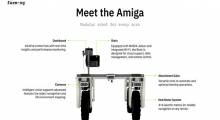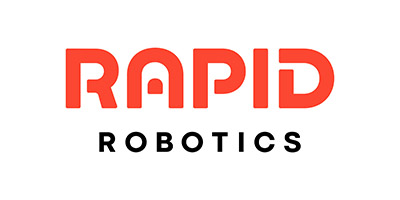PITTSBURGH – Labor shortages continue to be a problem for some of the global economy's most vital industries. It's no secret that's partly why so many companies in warehousing, manufacturing, and logistics are turning to artificial intelligence and robotics.
But despite the potential efficiency benefits, cost-savings, and worker retention gains, many companies aren't using robots at all.
Take the warehouse market, for example. A 2021 report from Research and Markets found that more than 80% of all warehouses have no automation.
Last week during the Cascadia Connect event in Pittsburgh, a group of robotics executives, investors, and systems integrators tackled that problem during the panel on “Bridging the Last Mile: How Do We Deploy Robots More Quickly and Efficiently?”
The panel was moderated by Jason Lippenberger, senior vice president at Cascadia Capital, and it included:
- Bryan Bird, regional president for the U.S. and Canada at Universal Robots
- Misa Ilkheci, co-founder and vice president of products and partnerships at Formic
- Jordan Kretchmer, co-founder and CEO of Rapid Robotics
- Jim Rock, operating partner at Arsenal Capital Partners
- James Van Thof, senior vice president of Adaptec Solutions
Success comes in the pitch

Rock, who is also the former CEO of Seegrid, said some of the biggest hurdles for companies to adopt automation aren't necessarily tied to the limitation of the technology, though he acknowledged that the technology could certainly be better. Many of the challenges have to do with the red tape behind investing in a new system.
“[It's] the more boring stuff, like scaling within an organization, customer success, or your go-to-market strategy” Rock said.
It's a problem he knows well as a former robotics executive and as an operating partner at Arsenal Capital Partners, a private equity firm that specializes in the healthcare and industrial sectors.
A customer is most concerned with having a system that will work reliably and not disrupt operations, Rock noted. It also wants to be able to easily integrate robots within its existing infrastructure. So the real challenge comes in successfully winning over a client to try out a system, he said.
“The usability, the whole business model of getting that solution to market and doing it in a way that the buying entity can get their head around it – that's incredibly difficult,” said Rock.
Scale quickly to meet demand
Kretchmer highlighted the disparity between the amount of human labor available and output demands. Robot makers have not been able to keep up and scale, he added.
“That growing chasm between the number of robots that are being deployed versus the labor shortage is causing billions of dollars in production output that's just not there,” said Kretchmer.

The demand for robotics has been high for at least the past five or six years, he asserted.
“What's missing is the ability to actually program these robots and deploy these robots at scale,” Kretchmer said.
Demand may be high, but scaling has been slow going because of the length of time it takes for customers to deploy these systems and the length of time it takes to see a return on value, he said.
Rapid Robotics' mission, in part, is to make the deployment process and ongoing management easier for companies of all sizes through a robotics-as-a-service (RaaS) model.
Bird echoed Kretchmer's sentiment, noting that demand is high, but some customers lack the skills necessary to invest in these technologies on their own. Bird said that's why there is a lot of value in companies such as Rapid Robotics, Formic, and Adaptec Solutions.

“Customers really struggle [choosing] the right technology providers and selections and figuring out how to plan the implementation,” he said. “They need partners to guide them through this because of the severe shortage of those skills resources to help them through that.”
Customers need continual tech support

As a systems integrator, James Van Thof said reliability is key for customers. He mentioned that Adaptec has 190 technical support people spread across the U.S. They are vitally important to the company's whole model, especially given that many companies are short on maintenance staff.
Adaptec has partnered with FANUC to create training programs designed for local high school students to become certified to operate industrial robots, said Van Thof.
“We'll train them for three or four years,” he said. “They're not going to college. They are getting hands-on training and making a good living wage.
“After those three years, after the certification, they are in the six figures, being able to do everything from programming robots to being able to service the robots,” according to Van Thof.
Partnerships are key

Ilkheci highlighted the benefits of Formic's partnerships. Like Rapid Robotics, Formic offers customers turnkey robotic systems through a RaaS model. It has partnerships with big names such as Universal Robots, FANUC, KUKA, and ABB.
In working with its partners, Formic puts a focus on flexibility, he said.
“We have deep conversations with our builders and integrators on figuring out how to reduce costs on deployments and makes those machines a lot more flexible,” Ilkheci explained.
About the Author
Follow Robotics 24/7 on Linkedin
Article topics
Email Sign Up




















